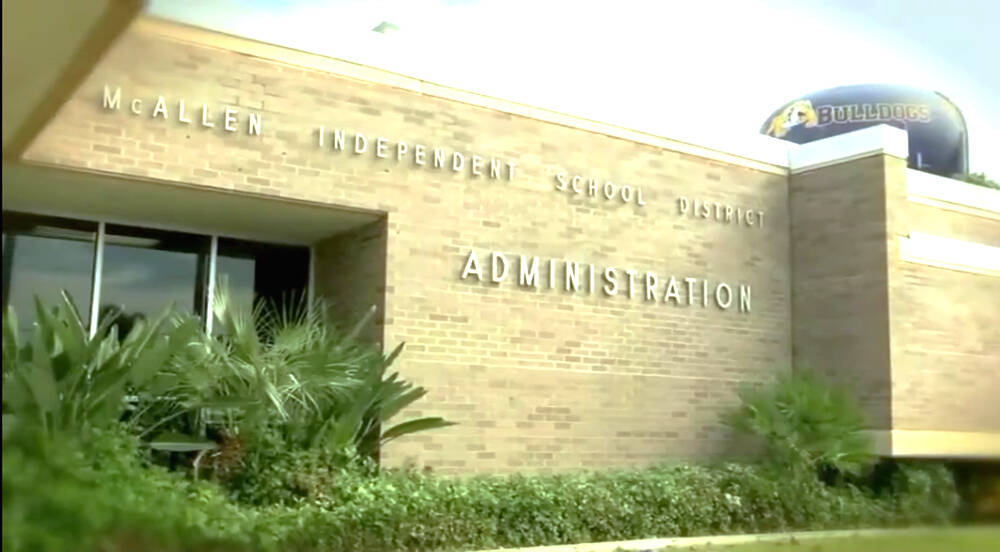With students returning to campus next week, McAllen Independent School District administrators largely voiced their confidence in school security measures at a town hall Thursday.
Safety and security has been the number one priority for school districts in the wake of the Robb Elementary School shooting in Uvalde in May.
A wave of threats of varying levels of credibility that were seemingly inspired by that tragedy resulted in over a dozen arrests in the Rio Grande Valley at the end of last semester.
At least two threats at districts in the Valley prompted a law enforcement response this week.
Local districts have responded to the tense climate with tighter security policies, increased law enforcement presence and — as in the case of McAllen’s town hall — with more communication about campus safety.
“I will say that since that day on May 24, the badge is a lot heavier. The responsibility is a lot heavier,” McAllen ISD Police Chief Jose “Joey” Silva told the audience Thursday. “The way that we think, the way that we do things — it’s about changing the dynamics, changing the culture, changing the behavior of things that have been allowed for so long. What we really need is we need people to buy into it and be on board with what we’re trying to do.”
The district’s force, Silva said, is prepared to meet a crisis or an active threat, and has not lacked board or administrative support.
In many ways, McAllen ISD’s current security apparatus is the result of a 2018 tax rate election that expanded the district’s police department.
The department has 62 officers, which allows it to post one at each of the district’s elementary and middle schools and four at each of its high schools.
That force includes specialists, among them K-9 officers and a drone team.
“And should we have to follow somebody, we can use a military drone to do that too,” Superintendent J.A. Gonzalez said. “And we have all of the equipment necessary to respond with the appropriate force. So without getting into detail, we feel very, very confident that our officers are equipped to neutralize any situation based on a given need.”
Much of the district’s preparation relates to how people are funneled through its campuses.
Security foyers greet visitors, who are screened using a law enforcement database and assigned a name tag. Beyond the foyer there’s a fair chance they’ll be met by an officer at a desk, and beyond that camera’s monitor high-traffic areas.
“So there’s different layers of protection with regard to what we do on the preparedness,” Gonzalez said.
The district has been less vocal about changes that may be made after the Uvalde tragedy or potential weaknesses in its security, citing concern over the disclosure of that information aiding threats.
District personnel check that doors are locked on a daily basis, Silva said, but the district is looking into installing sensors for entrances. Gonzalez noted that most, but not all, of his campuses are completely fenced.
The district, which has faced an increasingly tight budgetary situation, may also have to look at some facilities expenses in the near future.
“Portable buildings are a concern. We’re still excelling. We’re doing all the things that we can. Your children are still safe…” Gonzalez said, noting that his wife teaches in a portable building and his children learn in them. “But I wanted to plant that seed also…At some point we’re going to have to come together as a community and make a decision with regard to what we can do collectively to get our kids out of those portables.”
Aside from physical preparedness, the main focus of Thursday’s town hall was communication.
Silva said communication has been a struggle between law enforcement and the community at large.
Administrators encouraged that communication Thursday, and said the district has especially taken steps to encourage it with its students, creating a life-skills program with its police department and encouraging both traditional and non-traditional extracurricular activities.
“We’re trying to get our kids involved in something, because we found that the more involved a child is with their school, then the higher the probability that they will communicate when something is not right to a caring adult or another student,” Gonzalez said.
Communication, the district says, will be especially important in the event of an actual emergency.
The district will communicate a situation like that through texts, emails and social media, Gonzalez says, noting that drills include the communication portion of crises as well. The district even holds mock press conferences, he said.
“What we want to do, is we want to avoid panic,” Gonzalez said. “We want the community to know that we have things under control and regardless of what the situation is, it doesn’t help if we have hundreds of parents that are trying to get into the school while there’s an event happening.”





